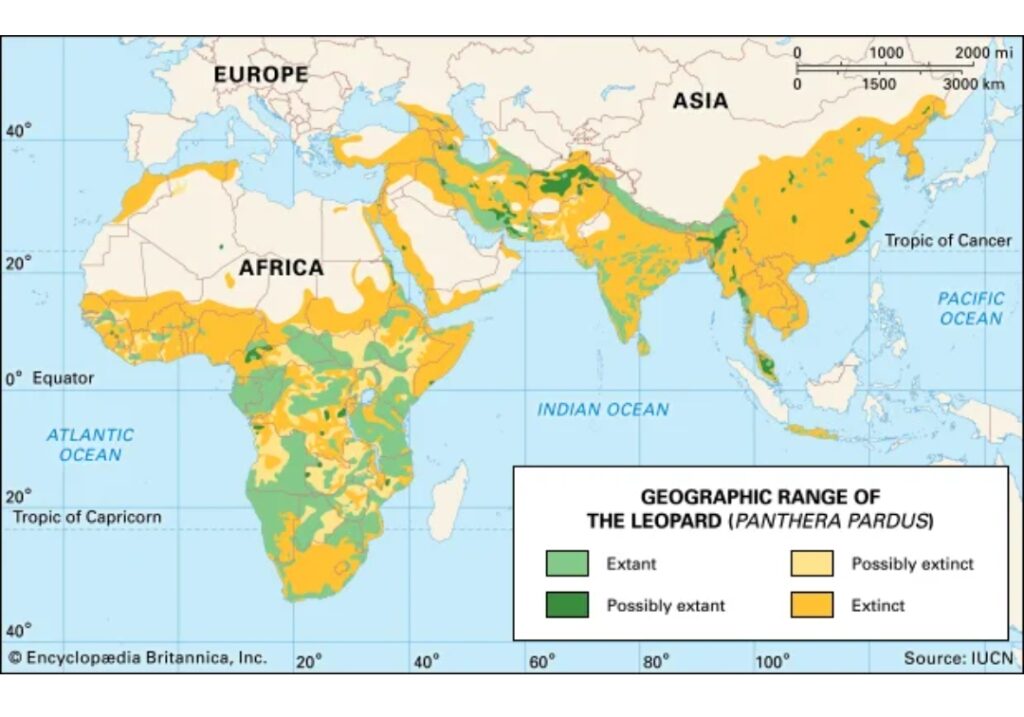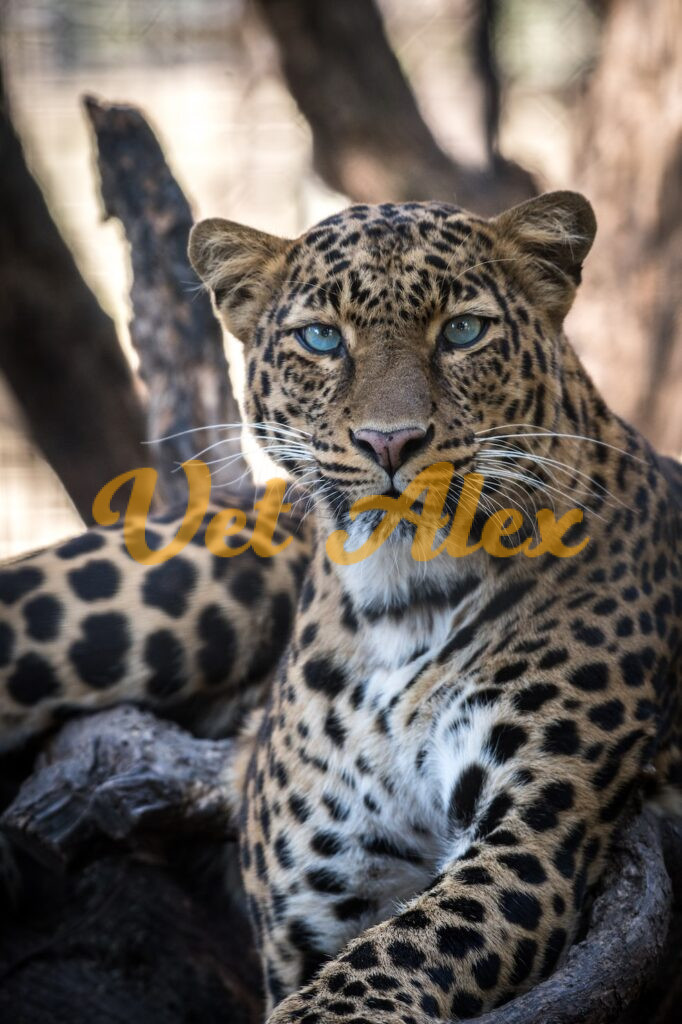Basic information of Its Ecology, Behavior, and life cycle .
What is a leopard ?
leopard is a large cat closely related to the lion, tiger, and jaguar .
The name leopard was originally given to the cat now called cheetah.
The leopard is a solitary animal of the bush and forest and is mainly nocturnal (active in night ) in habit, although it sometimes basks in the sun
The term pard was eventually replaced by the name leopard.
Introduction.
Leopards (Panthera pardus) are among the most fascinating and enigmatic big cats in the world.
Their widespread distribution across Africa and parts of Asia, coupled with their elusive nature, makes them a subject of great interest for researchers and conservationists.

This assignment aims to delve into the various aspects of leopard biology, behavior, ecology, and conservation efforts.
1. Taxonomy and Classification.
Briefly introduce the leopard’s taxonomy, highlighting its place in the Panthera genus. – Mention the various subspecies of leopards and their distribution.
2. Distribution and Habitat.

In 1750 the leopard’s geographic range spanned nearly the whole of Africa south of the Sahara, occupied parts of north and northeast Africa, and extended from Asia Minor through Central Asia and India to China and Manchuria. By 2019 the species had lost up to 75 percent of its former range
3. Morphology and Adaptations.
Leopards, known for their striking beauty and stealth, boast a distinctive morphology perfectly adapted for their role as apex predators.

Their muscular, elongated bodies are covered in a golden-yellow coat adorned with iconic rosette-shaped spots.
These spots serve as remarkable camouflage within their habitat, aiding in ambushing prey.
Powerful limbs grant leopards agility and strength, enabling them to climb trees effortlessly.
Their keenly developed senses, particularly sharp vision and acute hearing, are essential for nocturnal hunting.
A robust jaw, equipped with sharp teeth, ensures efficient consumption of a varied diet, ranging from small mammals to larger prey.
This combination of physical attributes underscores the leopard’s status as a formidable and adaptable predator.
4. Behavior and Social Structure.
Explore the solitary nature of leopards and their territorial behavior.
Leopards exhibit a fascinating array of behaviors that reflect their solitary and elusive nature.
These magnificent big cats are primarily solitary creatures, only coming together for mating.
Their territorial instincts drive them to mark their domains with scent markings, warning potential intruders.
Leopards are renowned for their stealth and patience, often stalking prey for hours before launching a lightning-fast ambush.
Exceptional climbers, they often hoist their kills into trees to safeguard them from scavengers. These versatile hunters possess a diverse diet, from small rodents to larger ungulates.
Leopards are known for their adaptability, thriving in various habitats across Africa and Asia, showcasing their remarkable behavioral flexibility.
5. Reproduction and Life Cycle.
The leopard’s life cycle is a testament to its resilience and survival skills.
Gestation lasts approximately 90-105 days, with mothers giving birth to two or three cubs on average.
The cubs are born blind and helpless, relying entirely on their mother’s care.
She hides them in dense vegetation for the first few months, guarding them fiercely.
Cubs begin to explore at around three months and are weaned by six months but remain with their mother for up to two years, learning essential hunting and survival skills.
At this point, they venture off to establish their territories, reaching sexual maturity at about 2 to 3 years old.
This cycle perpetuates the leopard’s legacy as a solitary, apex predator.
6. Interactions with Humans.
Leopard interactions with humans are multifaceted, often resulting from habitat overlap.
In some regions, leopards are revered and celebrated in cultural folklore, but in others, they are perceived as threats.
Human-leopard conflicts arise when these big cats prey on livestock or, rarely, pose risks to human safety.
Such conflicts sometimes lead to retaliatory killings.
Conservationists work to mitigate these conflicts through education, community engagement, and implementing non-lethal deterrents.
Additionally, leopards can occasionally fall victim to poaching for their prized fur and body parts.
Balancing coexistence and minimizing conflict is crucial for both leopard conservation and human safety in areas where these enigmatic creatures roam.
7. Conservation Status and Threats.
Leopard conservation efforts are critical as these magnificent big cats face numerous threats.
Habitat loss due to human encroachment is a major concern, fragmenting their territories.
Additionally, illegal wildlife trade drives poaching for their valuable pelts and bones.
To combat these challenges, conservationists have initiated various strategies.
Protected areas and national parks provide sanctuaries for leopard populations, offering a refuge from habitat destruction.
Anti-poaching measures, stricter legislation, and public awareness campaigns are being implemented to combat poaching.
Collaborative international efforts aim to curb illegal wildlife trade.
Research on leopard behavior and genetics informs conservation decisions, while human-leopard conflict mitigation programs seek peaceful coexistence.
These collective endeavors are essential to secure the leopard’s future in the wild.
References.
- Britannica dictionary – https://www.britannica.com/animal/leopard .
- Wikipedia – https://en.m.wikipedia.org/wiki/Leopard
- natgeo – https://www.nationalgeographic.com/animals/mammals/facts/leopard
- Vet Alex – https://www.vet-alex.com/
for more please visit: veterinary blog .
